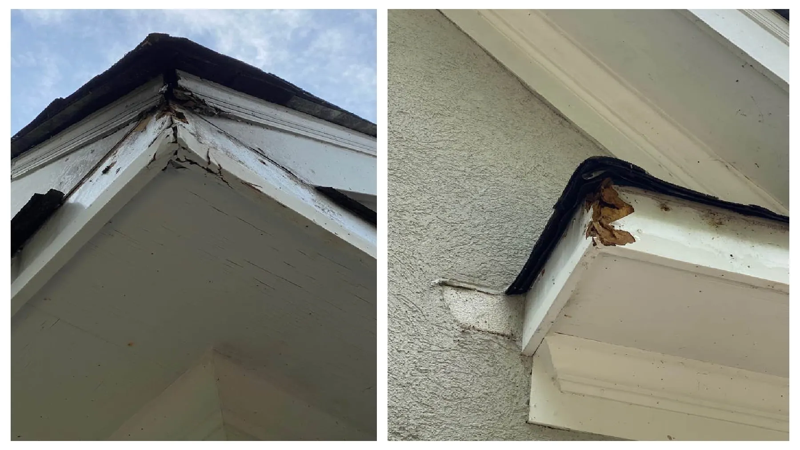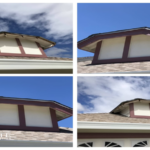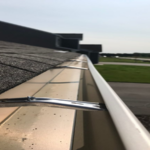Gutters are an important part of your home’s exterior design. They help protect your home from water damage by channeling water away from your foundation and preventing it from seeping into your basement or crawlspace. Gutters also help to prevent soil erosion around your home and can improve the appearance of your landscaping.
Installing gutters may seem like a daunting task, but it doesn’t have to be. There are a few simple things you can do to make the process simpler and less time-consuming.
First, it’s important to choose the right type of gutter for your home. There are a variety of materials to choose from, including aluminum, vinyl, and copper. Each type of gutter has its own set of benefits and drawbacks, so it’s important to do your research before making a decision.
Once you’ve selected the right type of gutter, you’ll need to measure the length of your home’s eaves. This will determine how much gutter material you’ll need to purchase.
Next, you’ll need to install the gutter hangers. These will support the gutters and ensure that they are properly secured to your home.
What are some common mistakes that people make when installing gutters?
One of the most common mistakes people make when installing gutters is not taking the time to properly clean and prepare the area where the gutters will be installed. If there is any dirt, debris, or leaves on the roof or in the gutters, this can cause the gutters to become clogged and cause water to back up and overflow.
Another common mistake is not properly attaching the gutters to the fascia board. If the gutters are not properly secured, they can come loose during a storm and cause water to pour down the sides of your house.
Finally, another mistake people make is not installing gutter guards. Gutter guards help to keep leaves and other debris from clogging the gutters and causing them to overflow.
What is the difficulty of installing gutters?
The difficulty of installing gutters really depends on the type of gutters you’re installing. If you’re doing a do-it-yourself project, then you’ll need to take into account the size and type of your gutters, the tools you’ll need, and your own ability to follow instructions and complete the project. If you’re hiring a professional to install your gutters, then the cost and difficulty of the project will depend on the complexity of your gutters and your home’s roofline. In either case, it’s important to make sure that your gutters are properly installed so that they can do their job of keeping water away from your home’s foundation.
What are the easiest gutters to install?
There are a number of factors that you need to consider when choosing the easiest gutters to install. The first is the type of gutter system you want. There are two main types of gutters – sectional and seamless. Seamless gutters are generally easier to install, as they don’t have any joints or seams that can leak. However, they are more expensive than sectional gutters.
The next factor to consider is the material of the gutters. Aluminum gutters are the most popular choice as they are lightweight and easy to work with. However, they are also more prone to denting and leaking than other materials such as vinyl or steel.
Finally, you need to decide on the style of gutters you want. The most popular styles are K-style and half-round gutters. K-style gutters are easier to install, as they have a simpler design. Half-round gutters are more aesthetically pleasing, but can be more difficult to install.
How do you install simple gutters?
- Start by measuring the length of your home’s gutter run. Most hardware stores or home improvement stores will sell pre-cut gutters in standard lengths, so it’s important to know how much you need before you head to the store.
- Once you have the gutters, you’ll need to install gutter hangers. These hangers will hold the gutters in place and will be attached to the fascia board (the board that runs along the edge of your roof). Most hangers are screwed into the fascia board, but there are also some that are nailed in place.
- Once the hangers are in place, you can start attaching the gutters. Begin at one end of the gutter run and work your way down, attaching each section of gutter to the hangers.
- Once the gutters are in place, you’ll need to install downspouts. These will carry the water away from your home and can be attached to the gutters with brackets.
- Finally, you’ll need to install some type of gutter guard or leaf guard. This will keep debris from clogging up your gutters and causing problems. There are many different types of gutter guards available, so choose the one that best fits your needs.
Should gutters be nailed or screwed in?
- The preference of the installer. Some installers prefer to use screws because they believe it creates a more secure connection. Others prefer to use nails because they are faster and easier to install.
How do you tell if gutters are installed correctly?
- Check to see if the gutters are level. They should be installed so that they slope slightly towards the downspout to allow water to drain properly.
- Make sure that the gutters are installed securely to the fascia board and the hangers are properly spaced so that the gutters will not sag or pull away from the house.
- Inspect the gutters to make sure that there are no gaps or leaks. These can be repaired with caulk or sealant as needed.
- Finally, run water from a hose through the gutters to check for proper drainage.
Should there be a gap between roof and gutter?
The purpose of a gap between the roof and the gutter is to allow for thermal expansion and contraction of the roof during temperature changes. without this gap, the roof could be damaged or even collapse.
Should gutters be flush with fascia?
Gutters should be flush with the fascia so that water can properly drain away from the roof and into the gutters. If the gutters are not flush with the fascia, then water can pool up on the roof and cause damage.
Bottom Line
If you’re looking for an easy and affordable way to improve your home’s curb appeal, then installing gutters may be the perfect solution. Thanks to new advancements in technology, gutter installation has never been simpler. With a few tools and some basic knowledge, you can have your gutters up and running in no time.















